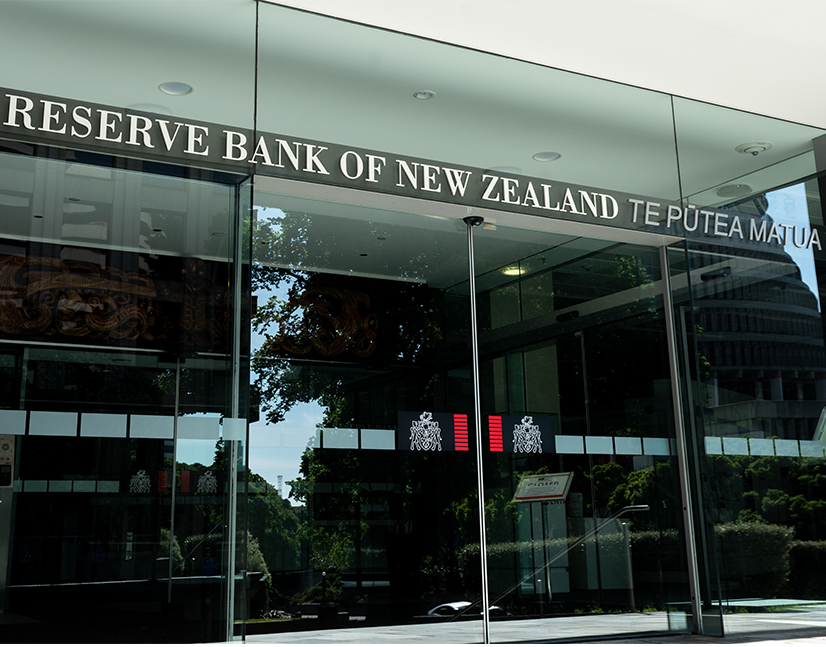
Two degrees of contagion
As the world scrambles to battle the COVID-19 pandemic, markets are tasked with sorting out how measures to fight the virus will affect economies and finding their best path forward. A panel of market participants from New Zealand, convened via teleconference, agree the country is in a better position than almost anywhere but acknowledge that the outsized influence of global markets on the local economy – and the scale of economic support programmes – make for a precarious future.
The discussion is an expanded version of a panel session that would have featured at the postponed KangaNews New Zealand Capital Markets Forum. KangaNews would like to thank ANZ for supporting the live session and the following coverage.
ECONOMIC IMPACT
Davison With COVID-19, has what was originally a public health crisis with economic consequences officially turned into a market contagion?
This should be no surprise, because everyone is locked in their homes and a huge number of firms are in a lot of trouble. In this regard, there is nothing weird, irrational or strange happening. In fact, falling equities is an entirely rational response because earnings are going to be much lower.
Central banks and governments are throwing everything they possibly can at the crisis. Unfortunately, the soothing messages and packages are not having a long-lived effect. The Fed [US Federal Reserve] has brought out the bazooka now with unlimited QE. So far, so good – in that equities have had two up days.
They are still volatile, but pressures in the credit market may be more of a concern. Global debt has gone up to high levels in the last 10-12 years. US corporate debt is a focus – junk bonds in particular – as is the potential for fallen angels, given the deterioration in the average quality of investment-grade bonds.
Davison To what extent does the degree of disintermediation and corporate leverage in the US make for an idiosyncratic challenge there? Or is everyone in the same boat?
This is a real concern, because the US dollar is the safe haven. We all saw money rush to the US in 2008-09, even when the fire was in the house. I think the US dollar will maintain its safe-haven status for lack of alternatives if nothing else. But when it is the numeraire risk-free asset that is potentially in the thick of it, things get complicated quickly.
BUY-SIDE CHALLENGES
Davison Investors are dealing with two challenges at the same time: a near-term liquidity crunch and the medium-term deterioration of credit quality. How are they addressing these?
We are now seeing some stabilisation with the Fed throwing the kitchen sink at the US market, and some liquidity is coming back. As an investor, you might not like the price and bid-offer spreads are still large – but a price does exist.
High-quality US issuers have also been coming to the primary market, albeit at extraordinarily high prices. This is quite a big difference to the last two weeks.
In fact, my concern is more with the New Zealand market, where, ironically, the credit is better but liquidity has been challenging. Essentially, where you had your portfolios in mid-January is what you own now. Like it or loathe it, that is where you are.
As Diana Gordon says, investors are stuck with what they owned in mid-January, because there has been very limited ability to exit ever since those doors started closing.
New Zealand is a small market and a small, open economy so we import these risks quite quickly. No issuer has been immune, although supranationals have outperformed.
We are now looking closely at what we own, and at default and downgrade risk. It is still very uncertain. The banking system goes into this in a much stronger position relative to earlier crises and, as a conduit, with buffers to facilitate borrowing. But should it persist for longer, and should policy settings not be sufficient to contain unemployment, it could morph into something more concerning for the banking sector. Rating agencies will be very focused on this as a risk.
Davison Are investors experiencing redemption pressure?
It is important to hold sufficient cash going into this environment. Even if you have positioned portfolios conservatively, you can still be the one called on for cash. We experienced this in the financial crisis. We didn’t hold the exposures to credit to the extent other managers did, but because we had more cash clients came knocking on our door to fund rebalancing trades.
We continued to reduce credit in the portfolio in favour of quasi-sovereign exposure, which we had been doing for the last 12 months. But if anyone predicted what we are seeing now – the maelstrom that has occurred in markets – they deserve the Nobel Prize and have probably just made several billion dollars.
We have just been trying to keep liquidity in the portfolio for redemptions and rebalancing. When interest rates went up, it was a bit like the end of the Titanic – the bow rising before it all went down. This was shocking. We did not even see it in the global financial crisis.
The sovereign market did not have this kind of pressure in the financial crisis, it was almost entirely a credit event. When we saw the types of moves that have happened in recent weeks, we realised it was not just the risk-parity funds that were unwinding – there was clearly also a massive leverage unwind happening.
Having cash and making sure you have access to liquidity has been absolutely critical for everyone’s mental health in this industry, because we are the first port of call. You might have been accumulating a beautiful portfolio but Vicky Hyde-Smith is right, they come knocking on the door.
RATES AND CREDIT CONDITIONS
Davison Can sector specialists give a New Zealand perspective on how markets have behaved as the COVID-19 crisis has unfolded, starting with the rates market?
Diana Gordon and Vicky Hyde-Smith both talked about the liquidity challenges. These put a lot of pressure on the New Zealand market and I think they are what brought the RBNZ’s QE plans forward so quickly. Rates were higher after the interest-rate cut than they were before it, which is similar to what we saw during the financial crisis.
This liquidity provision the RBNZ has added was necessary and it will be big if it continues in the same vein in which it has started. Coupled with the RBA [Reserve Bank of Australia] and other central banks adding a huge amount at the same time, what we have seen is a contraction in many funding spreads. This has taken a bit of pressure off the New Zealand market.
Where it goes from here is difficult to predict. I am of the view that this will be over quicker than the market expects now. The New Zealand government’s aggressive quarantine policy, which was brought in during the early stages of the virus spread, will hold the country in good stead.
In fact, I worry that we may end up over-stimulated in a short amount of time and then the RBNZ will have to look at unwinding some of the stimulus. For now, though, the liquidity provision is necessary. It has stabilised swap spreads, put a backstop on credit and helped other funding spreads and foreign exchange.
I am not sure the problems have gone away offshore. The liquidity the RBNZ and RBA have provided has encouraged sellers, where previous QE programmes have encouraged investors to buy in the same direction as the central bank. I suspect we will see a vast reduction in offshore holdings of New Zealand government bonds and, in effect, the RBNZ bringing those bonds onshore.
The good news for New Zealand is that we have gone into this with low levels of government debt, which has given the RBNZ balance sheet the flexibility to respond in significant volume.
As for the efficacy, I think the RBNZ’s LSAP [large-scale asset purchasing] programme [QE] will be successful at making the curve lower and flatter. I think it will be effective because of the large size of the programme (I thought we’d see a package of just NZ$20 billion and I was at the top end of market expectations), and because the RBNZ has a lot of flexibility within the NZ$30 billion to vary the pace and timing of purchases.
[RBNZ governor] Adrian Orr has hinted at widening the scope of QE. I do not think we will see other asset classes included just yet but I think that will come in time, given where credit spreads are travelling.
Davison How has the New Zealand credit market performed through this crisis?
The reaction in credit markets was the sharpest I have seen – much more severe than what we saw in 2008. The biggest casualty was liquidity.
We have changed shape a lot since 2008. Regulation has reduced the size of intermediary balance sheets and this has been a big factor. Offshore, we have seen the rise of passive investing – which tends to spur much more price-insensitive trading on the buy- and sell-sides. When a price-insensitive seller comes to a market that does not have a bid, it tends to hit whatever bid it is shown. Those bids have been moving back further and further.
We do not have the same structural setup in New Zealand but we are sensitive to what is going on overseas. The link through the equity market is quite strong. If you cross a 100-basis-point spread to sell a bond in order to buy into an equity market that has dropped 10,000 basis points, it is still a good trade. Investors’ flexibility in hitting the bid is quite high.
We definitely saw this in certain sectors, particularly retail – where we have seen amazing trades in terms of how far spreads have moved in a short period of time. The market was, in effect, shut for a week and a half, with only small volume going through. And those trades that did go through had wide bid-offer spreads.
There was a regional turning point for markets starting at the end of last week, when the RBA came out with its QE programme. This was backed by the widening of the Fed’s programme and it has put a short-term floor under the market here.
There has been a slow but steady contraction in bid-offer spreads and a small pickup in activity. It feels like we have turned a corner, at least for the short term.
A lot of medium-term risks still exist. We need to get through month-end rebalancing and then we still run the risk of rising cases [of COVID-19] in the US. Markets did not take note of the health crisis until it hit the US, then it became the major focus. We need to watch how it progresses there. If it gets significantly worse, markets could turn again.
The other point to think about in the longer term is that the fiscal and monetary stimulus being put out now is unprecedented. While governments and central banks have probably done enough to cushion this current move, how it will play out once economies recover is potentially a much bigger problem.
Davison We have been talking for years about reduced capacity on dealer balance sheets. Do conditions like these further affect the ability to hold bonds in trading books?
Everyone has been aware of this issue on the credit side but it has popped to the back of people’s minds because high-yield has come to be thought of as another relative-value trade. Everyone will probably realise in the next cycle that high-yield is not a relative-value play.
Having said this, I would like to repeat that most of the traded market here is still in the investment-grade space. There are not a lot of spots I am concerned about.
Surprising upside: New Zealand, FX and commodities
The New Zealand dollar declined rapidly as the COVID-19 crisis intensified. But there are reasons to think it – and many local commodity exports – may be approaching a positive trend.
ALLEN It has been an amazing couple of months for us. Going back to December, we had the US-China trade agreement and there was a lot of optimism in the region. Suddenly, the virus in Wuhan starts being talked about, it increases its ferocity and the region quickly replaces the optimism with pessimism. It has created unknowns about how this will affect trade flows from China and just how big the problem is going to become.
Australasian currencies, and the New Zealand dollar in particular, started drifting down to US$0.64 from US$0.66-0.67 just before the crisis really hit. This was an orderly decline, as everyone, particularly the US stock market, was ignoring the issue.
Then, suddenly, there were huge moves south in Australasian currencies when the global equities markets were hit. It resulted in a rebalancing effect as Australasian fund managers were forced to liquidate portfolios’ currency hedges.
QE EFFICACY
Davison QE and fiscal packages have a common problem at this stage – it is hard to stimulate an economy if people are being told to stay home. Is this part of the response just about having factors in place to prompt a quick economic recovery when one is possible?
The support is about getting as many jobs, businesses and mortgages through this in one piece as possible. We do not know how long that will take. The New Zealand government, like many others, announced a surprisingly large package and within a week it was scaled up again – and the situation will likely continue to require more.
It is horrendously expensive, so government debt will explode. Also, some of the package involves freeing up credit – which is great, but it means firms will be saddled with a lot of debt at the other end of this. They will need to stay viable through what is likely to continue to be tough times.
We just don’t know how successful it will be in getting firms through, because we do not know how long it will take. The initial package, with NZ$5.1 billion of wage subsidies for small and medium-sized businesses, will last 12 weeks and that is about three budgets’ worth of spending.
It is an abyss that we are tipping money into here and there are limits. It is absolutely the right thing to do, but it is not sustainable forever.
Davison Markets and analysts seem to have greeted the RBNZ announcement positively. It is interesting, though, that the RBNZ has gone for a purchase volume, rather than deploying the yield curve target, which the RBA did to a positive response in Australia. Would yield curve targeting have been a superior option?
I think things will evolve. At some point, the [RBNZ] governor may give an idea of what the monetary policy committee thinks is an appropriate level for the term structure of the government bond curve. In essence, the central bank would be using verbal guidance rather than forward guidance to give the market an idea of where it would like the long end of the curve to be – that is, what the bank is looking to achieve through QE.
The NZGB curve is currently 25-30 basis points above the Australian curve, despite having the same cash rate and outwardly pursuing the same objectives.
The other interesting thing is how much flexibility the RBNZ has, and I expect it to use that flexibility to bring us more into line with Australia. The responsibility for executing the NZ$30 billion QE programme sits with the RBNZ executive. They can use it as quickly as they feel they must to get market conditions where they want.
I expect some variability in the pace and timing of asset purchases to achieve the objective. The central bank can use this to send a strong signal to the market as to the level on which the RBNZ wants to land. If it is not happy with where things are over the next few days, it will hit the market with more until it does achieve what it wants.
As Sharon Zollner says, it is a fluid situation. What seems reasonable is not reasonable a few days later. At the moment the intent to do what is needed appears to be there. Additional assets could also be included if necessary.
Fund managers globally will not care about the New Zealand curve; they will use the purchases to get out of New Zealand government bonds. What worries me is who will buy the new issuance. The government will need to issue much more than NZ$30 billion so I question how much we can control this process. We can signal and say things are much more stable in credit markets but to what extent that continues is up for debate. My concern is the sheer size of all the central banks in the world going out and doing the same thing.
I should be clear that New Zealand is in a fantastic position because it does not have a lot of debt. It is a wonderful place to be and I am grateful to live here today. On the other hand, we may be only a small proportion of every central banks’ holdings but is any central bank going to buy New Zealand government paper instead of its own now? I doubt it.
Sovereign risk has become credit risk again. Bearing in mind liquidity and thinking about where I would put money right now to protect my clients, this market is now in a ‘return of’ rather than a ‘return on’ situation – and I need to be paid for this.
We also cannot have the kind of bid-offer spreads we have in the quasi-government space if we want offshore investors to come in. It would be good to see the RBNZ extend purchasing to some of the other high-quality names in the local market, for this reason.
I do not think the RBNZ needs to go down the spectrum yet. We do not know what the default situation will look like but we are in a maelstrom still, and it came on quickly. The market has not rebalanced yet and there will be another wave of rebalancing in balanced funds at the end of the month. I am leery of thinking NZ$30 billion will be enough. I think the RBNZ will need to buy big swathes of bonds.
The numbers right now are unfathomable and we do not know what the outcome will be. The playbook has not changed – central banks just keep bringing in more tools to ease conditions even further.
Davison On the subject of wider QE, is the RBNZ likely to broaden its buying programme to the likes of Kāinga Ora – Homes and Communities and the Local Government Funding Agency (LGFA) – and in the form of a bank funding facility?
While the RBNZ does not particularly want to take on the credit risk, the alternative of doing nothing and watching the repricing that has gone on across the high-grade credit market undermine everything it is trying to do is probably too much to bear.
I go back to what I said before: part of the reason the RBNZ package focused on government bonds to start with is simply because this situation was thrust upon us quickly. The initial response has been to keep it pretty vanilla, but it is evolving rapidly.
Davison What are the likely consequences of QE for capital-markets activity? It seems likely that the RBNZ is going to suck up quite a lot of government-sector supply and corporate funding is going to be re-intermediated through the banking system. Should we expect a prolonged hiatus for bond issuance in New Zealand?
We need to cover the semi-governments, such as Kāinga Ora and the LGFA. This will, hopefully, bring confidence back and could potentially encourage confidence in other parts of the market.
In the absence of this, it is particularly hard to see how regular issuance would restart. One observation I would make is that the commercial paper market can only get cover on the short-dated end now. The market is lacking confidence and there is a question of whether further fund redemptions may flow.
It is hard to sit here and feel confident now about a pipeline of issues. But the market can turn quickly. If we got further support from QE, it would be a welcome step in the right direction.
New data inputs
Analysts, traders and fund managers are used to financial modelling but are now, in effect, expected to base outlooks on epidemiological outcomes.
ZOLLNER We are all amateur epidemiologists nowadays! The uncertainty that abounds is ridiculous. There is a lot of demand, within the bank and outside, for numbers people can work with, even though everyone knows they will be based on particularly uncertain assumptions.
For what it is worth, we think New Zealand will not be able to eradicate COVID-19, simply because there are asymptomatic cases. But we may have got on top of it earlier than other countries. Even so, our prime minister is warning us that we will have thousands of cases and that we are at least two weeks away from the peak – we have to be realistic about that.
KangaNews is your source for the latest on the COVID-19 pandemic’s impact on Australasian debt capital markets. For complete coverage, click here.

HIGH-GRADE ISSUERS YEARBOOK 2023
The ultimate guide to Australian and New Zealand government-sector borrowers.

WOMEN IN CAPITAL MARKETS Yearbook 2023
KangaNews's annual yearbook amplifying female voices in the Australian capital market.



















